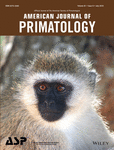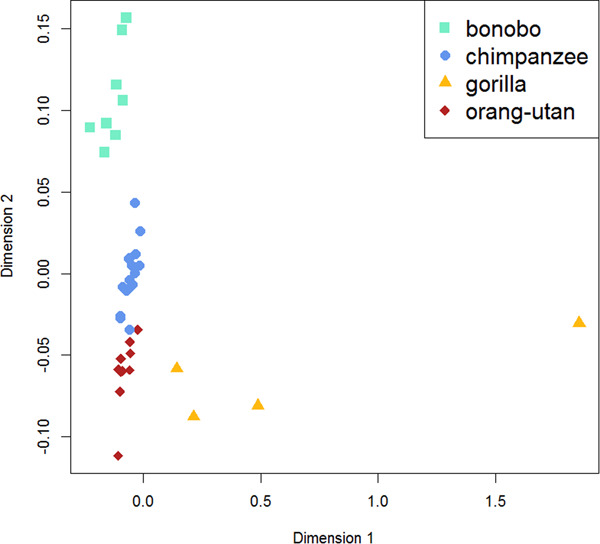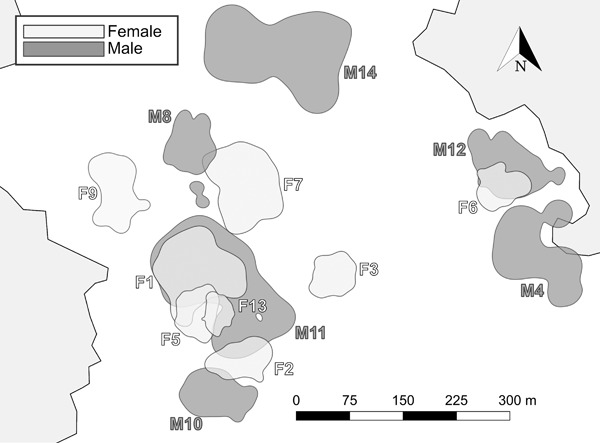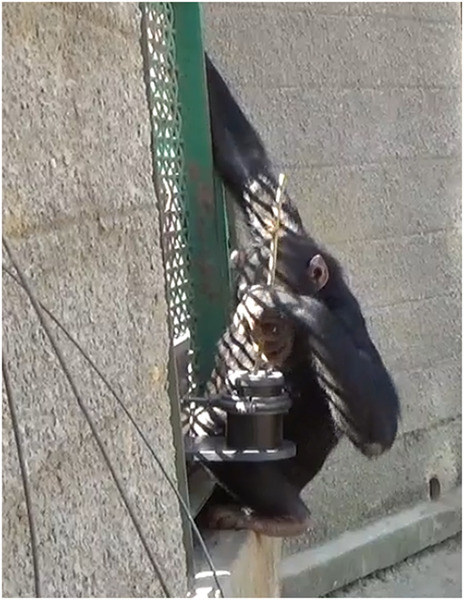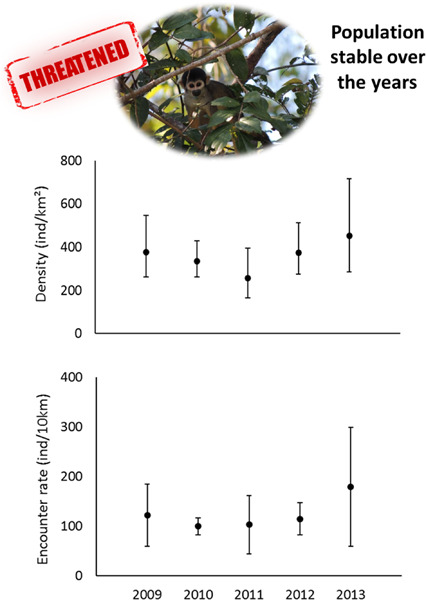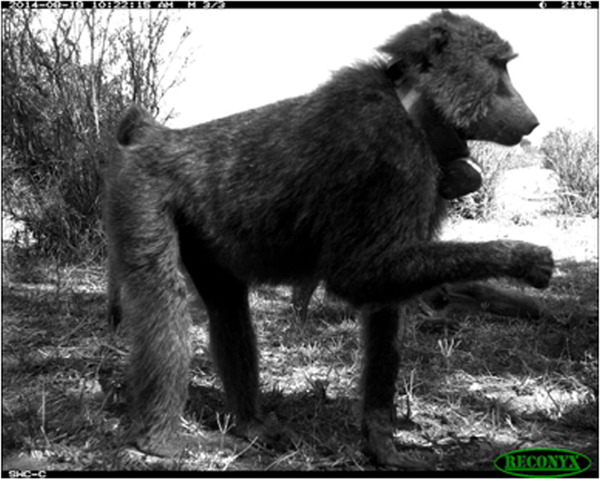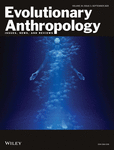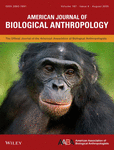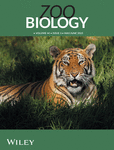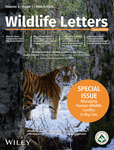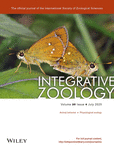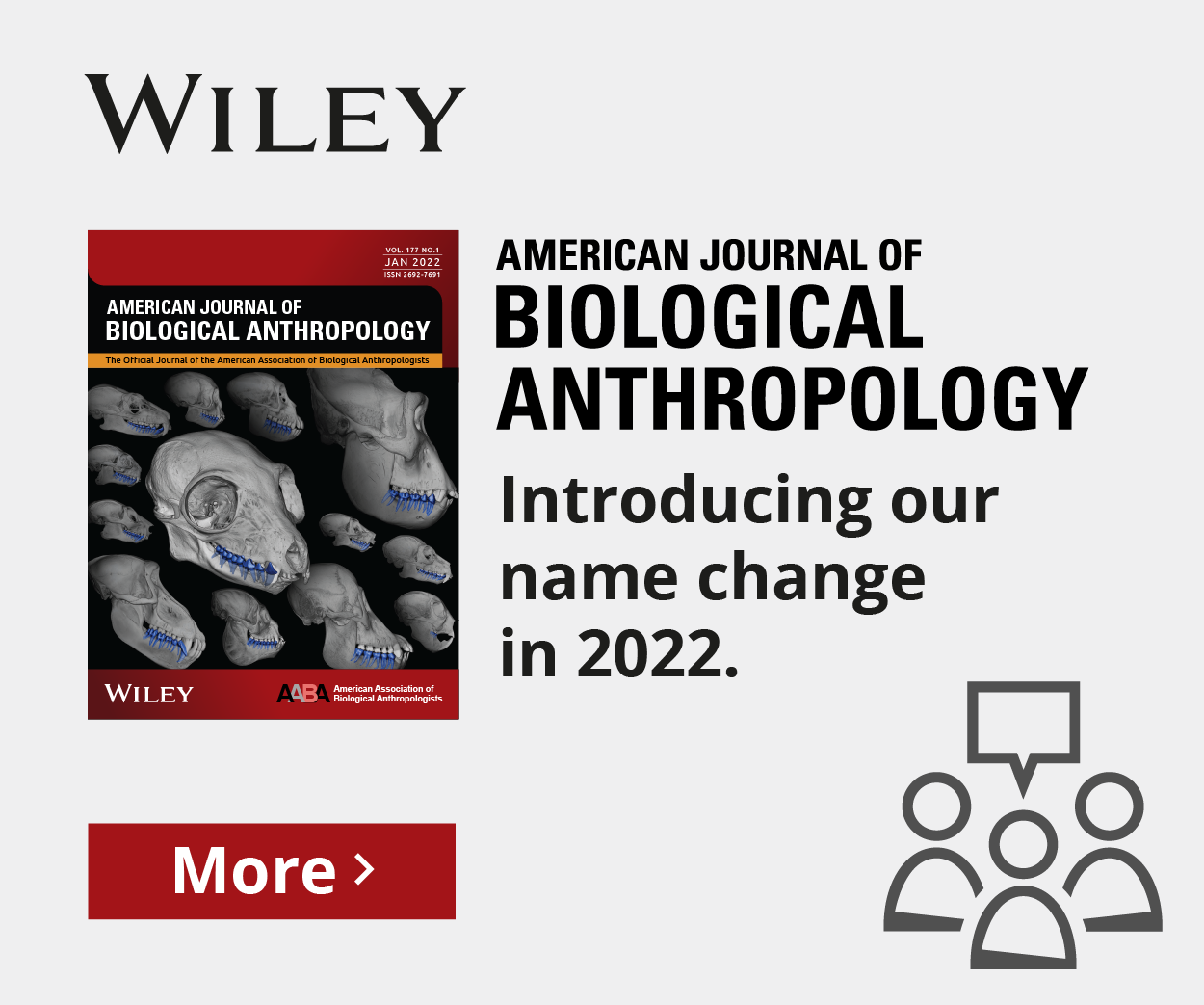Journal list menu
Export Citations
Download PDFs
ISSUE INFORMATION
RESEARCH ARTICLES
Differences between ecological niches in northern and southern populations of Angolan black and white colobus monkeys (Colobus angolensis palliatus and Colobus angolensis sharpei) throughout Kenya and Tanzania
- First Published: 24 April 2019
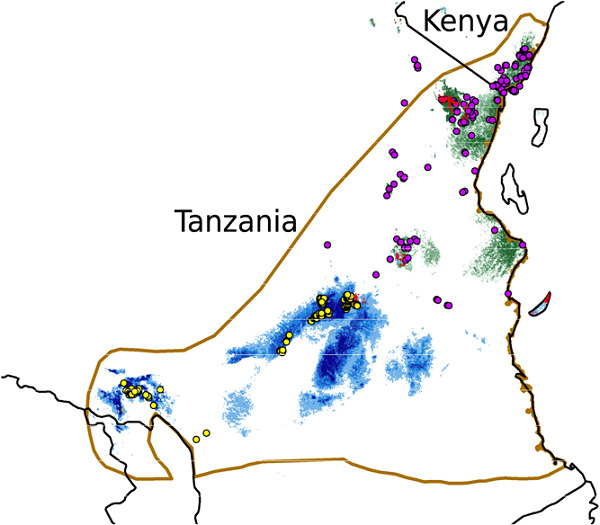
Predicted Kenyan and Tanzanian distributions of Colobus angolensis palliatus (green) and Colobus angolensis palliatus sharpei (blue) according to probability of suitability. White indicates unsuitable habitat and all other areas of suitability are normalized on a 0–1 scale where darker colors are closer to 1.0. Red indicates areas of overlap. Brown polygon indicates the 2008 International Union for Conservation of Nature Range Map (Kingdon et al., 2008). Purple dots are points considered C. a. palliatus; yellow dots are presence points considered C. a. sharpei (as defined by Rahm (1970)).
Comparative chemical analysis of body odor in great apes
- First Published: 15 May 2019
Possible mineral contributions to the diet and health of wild chimpanzees in three East African forests
- First Published: 14 May 2019
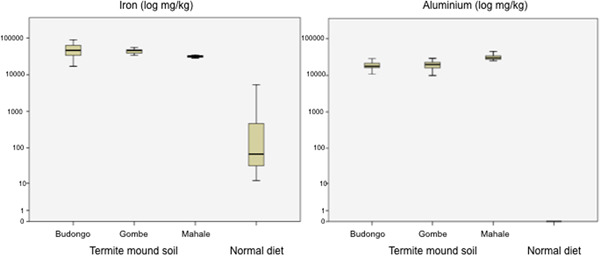
We present new data on the ingestion of minerals from termite mound soil by East African chimpanzees at three sites. Rich in minerals, termite mound soil contained the highest concentrations of iron and aluminium yet found in any of the dietary sources examined, as well as other minerals such as manganese and copper. We suggest mechanisms by which these minerals may come to be concentrated in termite mound soil, serving as a potentially important resource for wild chimpanzees.
Spatiotemporal distribution of individuals as an indicator for the social system of Lepilemur sahamalaza
- First Published: 07 May 2019
Individual acquisition of “stick pounding” behavior by naïve chimpanzees
- First Published: 13 May 2019
Long-term population monitoring of the threatened and endemic black-headed squirrel monkey (Saimiri vanzolinii) shows the importance of protected areas for primate conservation in Amazonia
- First Published: 15 May 2019
Evidence of genetic monogamy in the lemur Indri (Indri indri)
- First Published: 10 June 2019
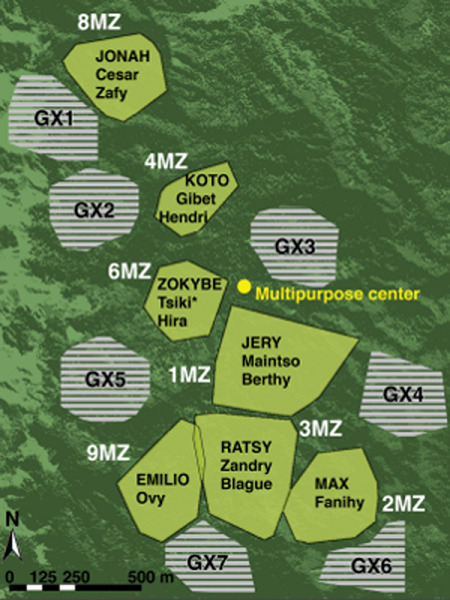
Spatial distribution of the indri groups included in the genetic and paternity analyses (solid green polygons), and the schematic representation of unsampled neighboring groups (gray striped polygons, GX1 to GX7). The uppercase names within each studied group are the social fathers; the lowercase names are the offspring tested. “*” denotes the only individual we found with inconclusive paternity assignment.
Understanding primate-human interaction: Socioeconomic correlates of local awareness and attitude toward the endangered golden langur Trachypithecus geei (Khajuria, 1956) in Bhutan
- First Published: 12 June 2019
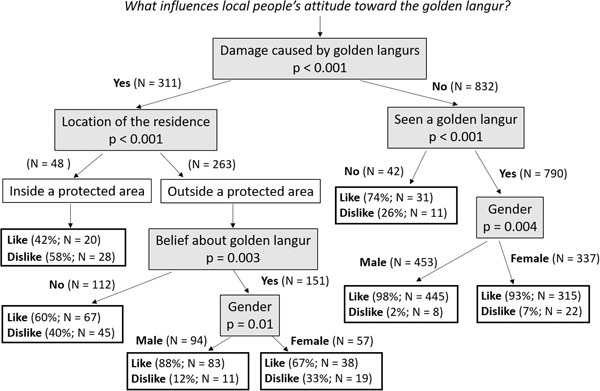
Local people's attitude towards the endangered golden langur is primarily influenced by whether or not they have experienced crop damage by langurs. Their awareness of this primate species's globally endangered status is significantly influenced by their location of residence relative to (inside/outside) a protected area and their education level.
Determining overweight and underweight with a new weight-for-height index in captive group-housed macaques
- First Published: 13 June 2019
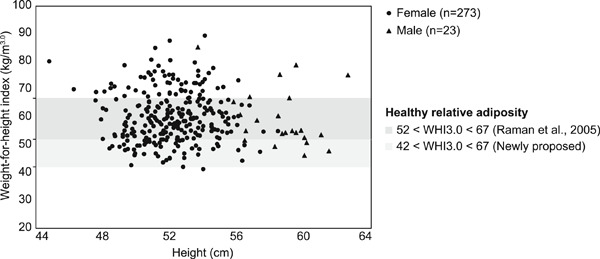
Relative adiposity (WHI3.0: weight divided by height to the third power) plotted against height for group-housed adult female and male rhesus macaques. The dark gray bar represents the proposed overweight and underweight boundaries for solitary-housed rhesus macaques. The light gray bar indicates the new lower boundary based on wild primates.
Capture, immobilization, and Global Positioning System collaring of olive baboons (Papio anubis) and vervets (Chlorocebus pygerythrus): Lessons learned and suggested best practices
- First Published: 10 June 2019
A competitive drive? Same-sex attentional preferences in capuchins
- First Published: 12 June 2019
NEW APPROACHES
Capture of Alouatta guariba clamitans for the surveillance of sylvatic yellow fever and zoonotic malaria: Which is the best strategy in the tropical Atlantic Forest?
- First Published: 13 June 2019
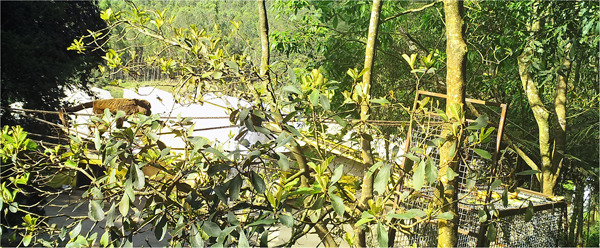
Alouatta guariba clamitans crossing the road through the rope, very close to the baited trap in platform 2. Even after 25 weeks, it never entered or examined the platform or the baits, which increases the need to develop better strategies to capture and examine this species in the Atlantic Forest. Panoramic image was assembled using the software Microsoft Image Composite Editor 2.0 (ICE).





